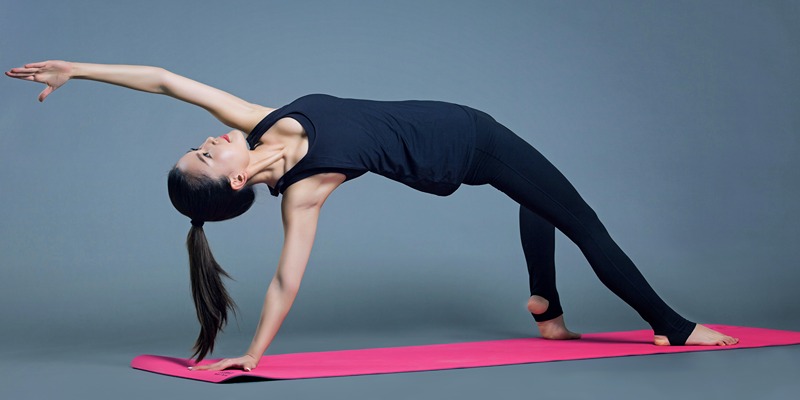What Causes Tendinitis and How Can You Find Relief?
Nov 03, 2024 By Korin Kashtan
Tendinitis is a very common condition these days. Many individuals suffer from this condition due to an increase in repetitive activities. Knowledge of this disease, its signs, causes and remedies should enable patients in the populace to manage this condition effectively. So, keep reading!
What is Tendinitis?
Tendinitis is a condition characterized by inflammation of a tendon. This is a thick, tough band of tissue that joins a muscle to a bone. Tendons are string-like structures that connect muscles to bones Generally, when tendons are inflamed or frayed, we feel pain and some level of discomfort that NYU Langone Orthopedic Hospital noted hampers movements of the particular joint. It arises predominantly in areas where human tendonitis connective tissues abound and usually affects the shoulders, elbows, kneecaps, wrists, and heels.
What are the Symptoms of Tendinitis?
Tendinitis symptoms generally develop in a place where the tendon joins with the bone. Common symptoms include:
Dull ache: Pain is not a friend of motion. It is more malignant when movement is involved.
Tenderness: Involuntary urges might also be experienced. The area may be sensitive to the touch.
Swelling: Local oedema Orlando may be present as mild swelling around the tender or affected tendon.
Stiffness: It may be tough to move the joint.
When you see some of these signs, it is wise to avoid using the affected part and seek medical advice if the pain continues.
Causes of Tendinitis

The primary risk factor associated with tendinitis is any repetitive activity. Doing the same thing repeatedly yields stress on the tendons. In this case, the stress is accrued along the length of the rope by bending it round and round to form a pulley. Other common causes include:
Injury: Accidents also cause tendinitis to happen on the affected region of the body part in question.
Aging: Tendons take an elongation at couple of age and affording anything which leads them to become more inferior to injury.
Medical conditions: Other conditions like diabetes for instance or rheumatoid arthritis among other illnesses can cause the risk.
Certain medications: Antibiotics also can cause some problems with tendons, particularly if youre taking fluoroquinolones.
Risk Factors
Several factors can increase the likelihood of developing tendinitis:
Age: Older patients for instance women are vulnerable since tendons become less stretchy with age.
Occupation: Jobs involving repetitive motions (like typing or manual labor) can lead to tendinitis.
Sports: Athletes engaging in sports that require repetitive arm or leg movements (like tennis or basketball) are more susceptible.
Poor posture: Incorrect body mechanics during activities can strain tendons.
Treatment Options for Tendinitis

Managing tendinitis involves several approaches aimed at reducing pain and inflammation. Here are some common treatment options:
Home Remedies
Rest: Avoid activities that aggravate the pain.
Ice application: Apply ice packs for 15-20 minutes several times a day to reduce swelling.
Compression: Use elastic bandages to wrap the affected area for support.
Elevation: Keep the injured area elevated above heart level when possible.
Medications
Over-the-counter pain relievers can help alleviate discomfort:
Acetaminophen (Tylenol): Reduces pain but does not decrease inflammation.
Nonsteroidal anti-inflammatory drugs (NSAIDs): Ibuprofen (Advil) or naproxen (Aleve) can help reduce both pain and inflammation.
Physical Therapy
Physical therapy is often recommended for strengthening muscles around the affected tendon and improving flexibility. A physical therapist may suggest:
- Stretching exercises
- Strengthening exercises
- Techniques to improve posture and movement patterns
Advanced Treatments
In some cases, healthcare providers may recommend more advanced treatments:
Corticosteroid injections: However, they can instigate an inflammation reduction, but need to be used with care because of side effect.
Platelet-rich plasma (PRP) therapy: This is where someone takes some of your blood and injects it into the tendon to promote healing.
Injury Prevention Strategies
Preserving joint health and avoiding painful flare ups of tendinitis is chief among preventing tendinitis. Here are some effective strategies:
Warm-up before activities: Before attempting a sport or a physical activity, you will always feel it is good idea to always warm up your muscles with light exercises.
Cross-train: One great way to avoid overworking the same areas of your body is to vary your workouts.
Use proper equipment: Make sure the sports gear is suitable and fits well for your activity.
Maintain good posture: Pay attention to how you are using your body when you work or exercise.
Tendinitis Pain Relief Methods
People suffering from tendinitis need effective pain relief methods. Taking the right approach can reduce discomfort and help speed one back to normal activities. Here are some popular pain relief methods:
1. Heat Therapy
The heat helps to relax muscles and increase blood flow, and can be applied to the affected area. This is particularly good for chronic tendinitis. Heres how to use heat therapy:
Heating pads: Place a heating pad on for 1520 minutes.
Warm baths: Warm bath soaking can help too.
Warm towels: Warm, damp towel on the painful area.
2. Massage Therapy
Pain and stiffness can be alleviated by gentle massage around the affected tendon. It boosts circulation of blood in your body while also relaxing muscles. Consider these tips for effective massage:
Use gentle pressure: Avoid pressing too hard on the inflamed area.
Focus on surrounding muscles: Massaging nearby muscles can relieve tension on the tendon itself.
Seek professional help: A licensed massage therapist can provide targeted relief.
3. Topical Pain Relievers
Over-the-counter topical treatments can be applied directly to the skin over the painful area. These products often contain ingredients like menthol or capsaicin, which can provide temporary relief. Here are some options:
Creams and gels: Look for products labeled as pain-relieving or anti-inflammatory.
Patches: Adhesive patches infused with medication can be worn throughout the day.
4. Alternative Therapies
Some people find relief through alternative therapies. While scientific evidence varies, many individuals report positive experiences with:
Acupuncture: This traditional Chinese medicine technique involves inserting thin needles into specific points on the body to relieve pain.
Chiropractic care: A chiropractor may help align your body and relieve tension in muscles and tendons.
Final Words
Tendinitis is a manageable condition if addressed early with proper care and preventive measures. Understanding its causes, symptoms, and treatment options empowers individuals to take control of their health and maintain an active lifestyle without discomfort.
On this page
What is Tendinitis? What are the Symptoms of Tendinitis? Causes of Tendinitis Risk Factors Treatment Options for Tendinitis Home Remedies Medications Physical Therapy Advanced Treatments Injury Prevention Strategies Tendinitis Pain Relief Methods 1. Heat Therapy 2. Massage Therapy 3. Topical Pain Relievers 4. Alternative Therapies Final Words
Do Lactic Acid Buildups Cause Post-Workout Muscle Soreness?

Yoga Fusion: Enhance Your Practice with Exercise Ball Poses

Eating Right for Eczema: Best and Worst Foods Revealed

What Causes Tendinitis and How Can You Find Relief?

Measurements That Matter: Understanding Waist Circumference for Health

Meditation in Motion: Ways to Find Peace Without Sitting Still

Mastering the Art of Foot Care: Using a Pumice Stone for Soft Feet

Bananas and Weight Loss: Unraveling the Truth Behind the Myth

Essential Strength Training for Women Over 50

4 Most Related Emotions Cause Overeating and What to Replace Emotional Eating with

Are Electrolyte-Loaded Sports Drinks Healthy: An Understanding
